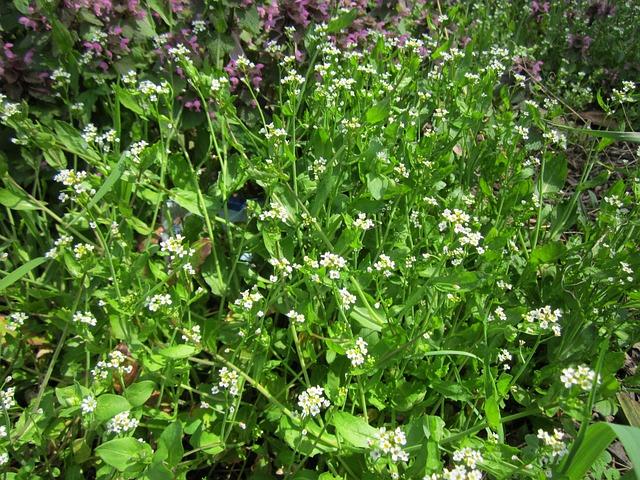| Complexity level: | 8 |
| Project cost ($): | 180 |
| Time required: | 1 day for preparation, 120 days for observation |
| Material availability: | Easily obtained from a gardening supplies store. However, you will need to send your soil samples to a laboratory for testing |
| Safety concerns: | None |
Hypothesis
The amount of zinc removed from soil by the Thlaspi plant will not be significant.
Overview
Phytoremediation
Phytoremediation is the process of using plants to remove contaminants from soil. It is a simple method of treating soil without having to excavate the land and dispose of the soil somewhere else. This method can be applied to both soil and stagnant water in lakes and ponds.
The advantage of using phytoremediation is the lower cost of implementation, compared to excavating the land or pumping out the contaminated water. The plants can also be monitored, and the retrieved metal stored and processed for future use. This method is a natural process and is hence environmentally friendly. The disadvantages are that the process is time-consuming and the effectiveness is limited to the surface area or the length of the roots. Care must also be taken to prevent the plants from entering the food chain.
An example of phytoremediation is the use of the Thlaspi plant to remove zinc from soil. The Thlaspi plant can accumulate up to 1500ppm of cadmium and 30000ppm of zinc in its leaves and shoots, compared to other plants that can tolerate only 50ppm cadmium and 1000ppm zinc.
The Thlaspi plants are a genus of herbs ofwhich grow in temperate regions. There are 5 common varieties, namely:-
Thlaspi alliaceum
Thlaspi arvense
Thlaspi caerulescens
Thlaspi perfoliatum
Thlaspi rotundifolium
Scientific Terms
Materials
The materials required for the science fair project:
- 400 Thlaspi seeds
- 1 shallow container (~10cm height)
- Soil with 600ppm zinc (enough to fill the shallow container)
- 5 small containers
Procedure
1. For this science fair project, the independent variable is the number of cycles for planting the Thlaspi plant in the soil. The dependent variable is the parts per million (ppm) of zinc in the soil. This is determined by sending the soil samples to an independent laboratory for testing. The constants (control variables) are the amount of the soil, the surface area of the container, the number of plants and the growth cycle of the plants.
2. Label the 5 small containers as “Initial”, “1st cycle”, “2nd cycle”, “3rd cycle” and “4th cycle”. Pour a small amount of soil into the container labeled “Initial”.
3. Fill the shallow container with soil.
4. Count and spread exactly 100 Thlaspi seeds over the surface of the soil. Allow the seeds to grow and mature over the next 30 days.
5. After 30 days, remove the Thlaspi plants from the soil. Scoop out a sample of soil from the shallow container and transfer it to the container marked “1st cycle”.
6. Repeat steps 4 and 5 another 3 times using the same soil. Do not add any fresh soil to the container. Keep the soil samples taken on the 60th, 90th and 120th days in the containers marked “2nd cycle”, “3rd cycle” and “4th cycle” respectively.
7. At the end of the 4th cycle, send all 5 soil samples to an independent test laboratory to check for the zinc content in the soil. Record the results in a table, as shown below.

Results
It is observed that the level of zinc content in the soil showed a small decline after every growth cycle of the Thlaspi plant.
| Contaminant | Zinc content in soil (ppm) | ||||
| Initial | Cycle 1 | Cycle 2 | Cycle 3 | Cycle 4 | |
| Zinc content | 598 | 592 | 584 | 573 | 565 |
Our results were then plotted on a graph as show below:

Conclusion
The hypothesis that the amount of zinc removed from the soil by the Thlapsi plant will not be significant, has been proven to be true. However, phytoremediation is a time-consuming process, and is hence more effective in rehabilitating soil over the long term.
The use of phytoremediation to remove contaminants from soil and pond water has been gaining popularity over the past 20 years. This is because it is very cost-effective and environmentally friendly, compared to soil excavation works. However, phytoremediation is a very time-consuming process, and cannot prevent the contamination of groundwater.
Also consider
The science fair project may be repeated using spinach instead of the Thlaspi plant, to compare the effects of other plants on the zinc content in soil.
The science fair project may also be modified to compare the rehabilitating abilities of other types of plants, like sunflowers, in removing other types of minerals.
References
Phytoremediation - http://en.wikipedia.org/wiki/Phytoremediation
Phytoremediation: using plants to clean up soils- http://www.allbusiness.com/agriculture-forestry-fishing.../981489-1.html

